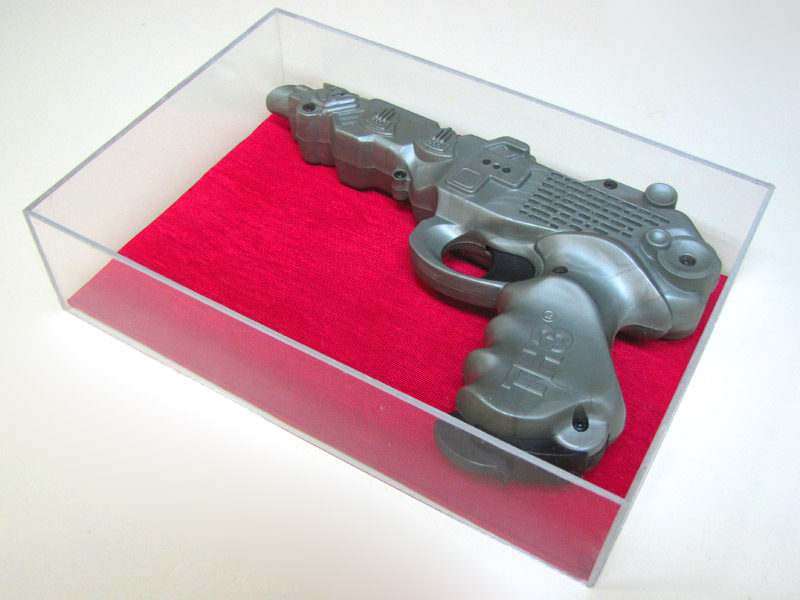Determine the correct feed direction for the cut. You want the rotating bit to be pushing the incoming acrylic against the fence, as it cuts, rather than away from it.
Remove the cold sheet of acrylic from the freezer.
Put on goggles, ear protection, and gloves. Start the router.
Position one edge of the acrylic sheet against the fence, and hook the trailing edge of the sheet with the “heel” on your push stick.
With your dominant hand, press down on the push stick to hold the acrylic against the router table. With your free hand, maintain gentle pressure against the outside edge of the acrylic to keep it tight against the fence.
With a continuous, steady, relaxed motion, feed the workpiece through the spinning router bit, making the cut.
Repeat the preceding three steps for the three remaining edges of the panel. When you’re finished, turn off and unplug the router.


